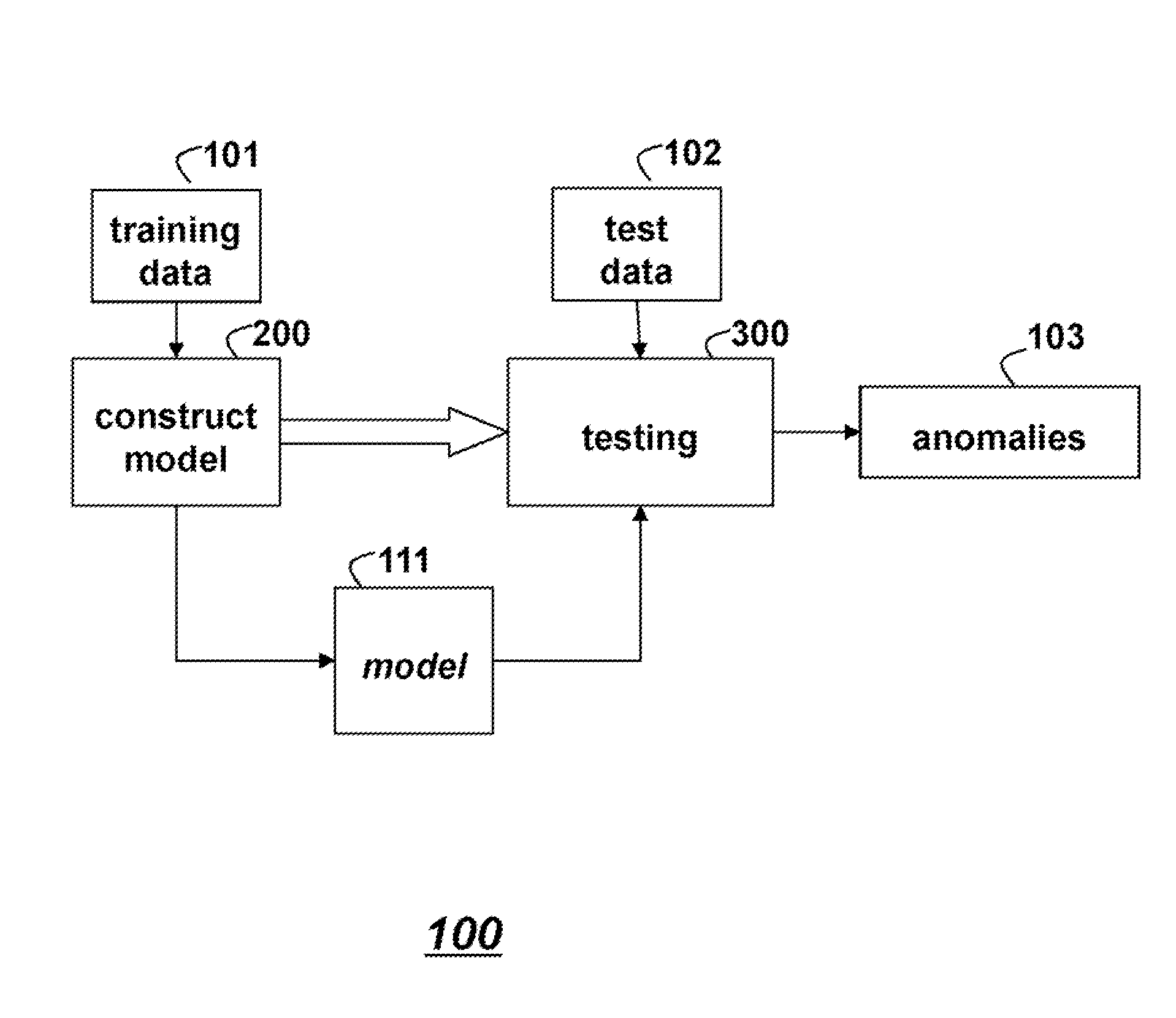Method for Detecting Anomalies in Multivariate Time Series Data
a multi-variate time series and anomaly detection technology, applied in the field of time series data processing, can solve the problems of not compute any feature vector, or representation of data, and imposes a fairly restrictive assumption
- Summary
- Abstract
- Description
- Claims
- Application Information
AI Technical Summary
Benefits of technology
Problems solved by technology
Method used
Image
Examples
Embodiment Construction
[0010]The embodiments of our invention provide a method for detecting anomalies in multivariate time series data. Specifically, time series data acquired by sensors of equipment. Multivariate time series arise in many different applications. We are particularly interested in monitoring equipment condition.
[0011]Equipment condition monitoring is the process of analyzing signals from various sensors attached to equipment, such as pumps, condensors, fans, etc., to determine if the equipment is operating normally, or not. The sensors, such as vibration sensors, pressure sensors, temperature sensors, etc., output a series of sensor data, which is called a time series. When data from multiple sensor are available, the time series is a multivariate time series. Each dimension of the multivariate time series contains data from one sensor.
[0012]The goal of equipment monitoring is to analyze the time series data from equipment sensors to automatically detect if the equipment has failed, or, p...
PUM
 Login to View More
Login to View More Abstract
Description
Claims
Application Information
 Login to View More
Login to View More - R&D
- Intellectual Property
- Life Sciences
- Materials
- Tech Scout
- Unparalleled Data Quality
- Higher Quality Content
- 60% Fewer Hallucinations
Browse by: Latest US Patents, China's latest patents, Technical Efficacy Thesaurus, Application Domain, Technology Topic, Popular Technical Reports.
© 2025 PatSnap. All rights reserved.Legal|Privacy policy|Modern Slavery Act Transparency Statement|Sitemap|About US| Contact US: help@patsnap.com



